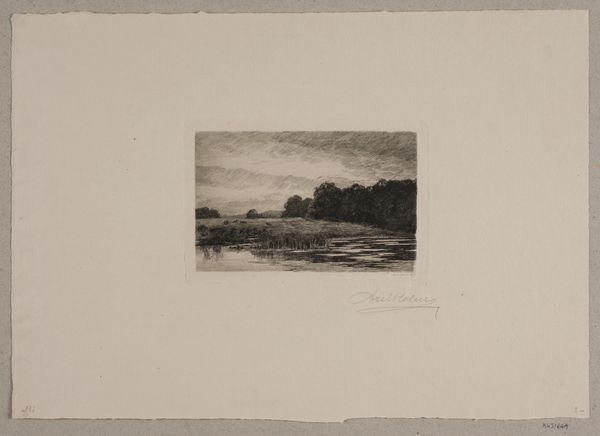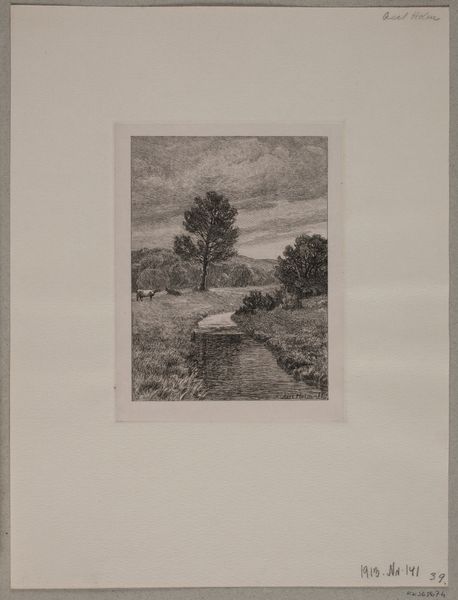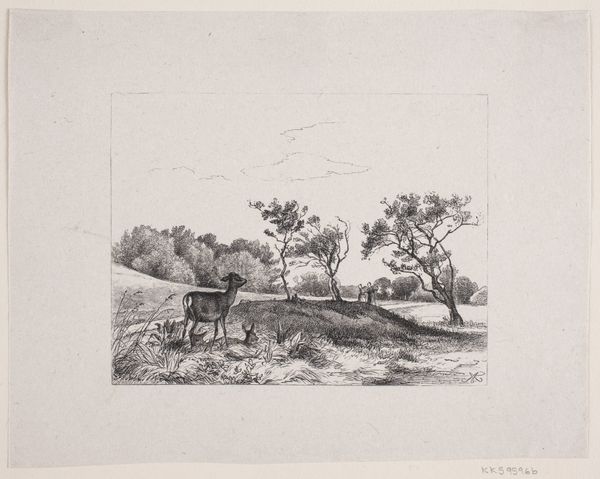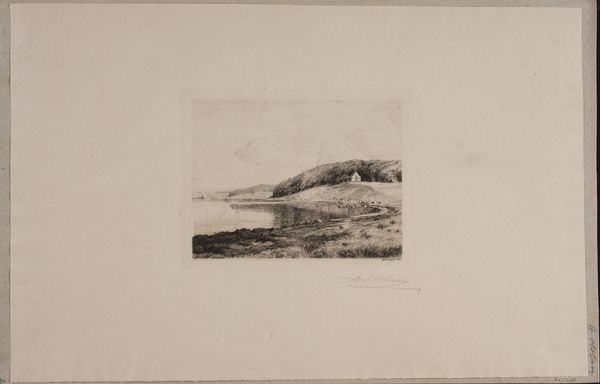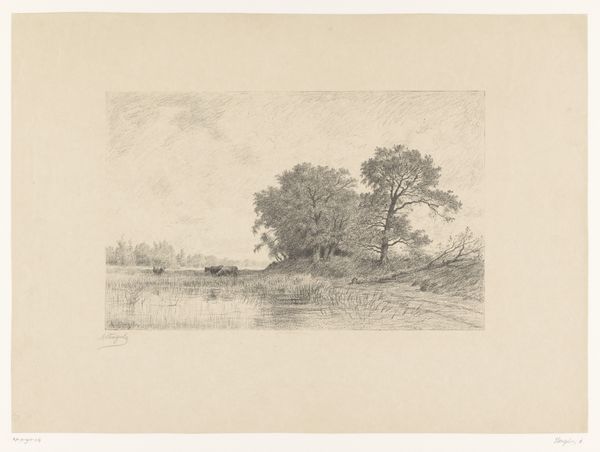
print, etching
# print
#
etching
#
landscape
#
genre-painting
#
realism
Dimensions: 96 mm (height) x 126 mm (width) (Plademål)
Editor: "Landscape by the Beach," an etching by Axel Holm, dated 1893. There’s such a quiet, pastoral feel to it, even with the starkness of the black and white. It really captures a slice of everyday life. As a historian, what strikes you most about this image? Curator: It's interesting that you describe it as stark. Consider the rise of plein air painting around this time, and the increasing representation of rural life in art. How might an image like this participate in constructing an idea of Danish identity? Holm chose to depict this calm rural imagery in printmaking, which makes me wonder - why make it accessible to a broader public? Editor: So, by making a print, he could disseminate this idealized view of Denmark further than a painting hanging in a wealthy collector’s home. I suppose it connects with nationalistic sentiments, doesn't it? Curator: Precisely. Look at the composition – the cows, the seemingly untouched landscape. What narrative are we encouraged to construct about rural Denmark? Do you think it accurately reflects the realities of life for farmers in 1893, or is it presenting a specific vision? Editor: I suspect it leans toward the idealized. The cows seem content, the landscape peaceful... almost staged, perhaps, and divorced from any indication of social realism. It seems like propaganda to boost national pride. Curator: That's a sharp insight. So, how might a piece like this shape not just national identity, but also influence cultural values regarding land use and the agricultural workforce at the time? Editor: I hadn’t thought of it like that, influencing the future by presenting a certain version of the past and present. I went in thinking this was just a simple, serene landscape, but it’s actually doing so much more, projecting a national brand through selective imagery. Curator: It underlines the importance of questioning the images we see and recognizing the potential for art to both reflect and shape society.
Comments
No comments
Be the first to comment and join the conversation on the ultimate creative platform.


